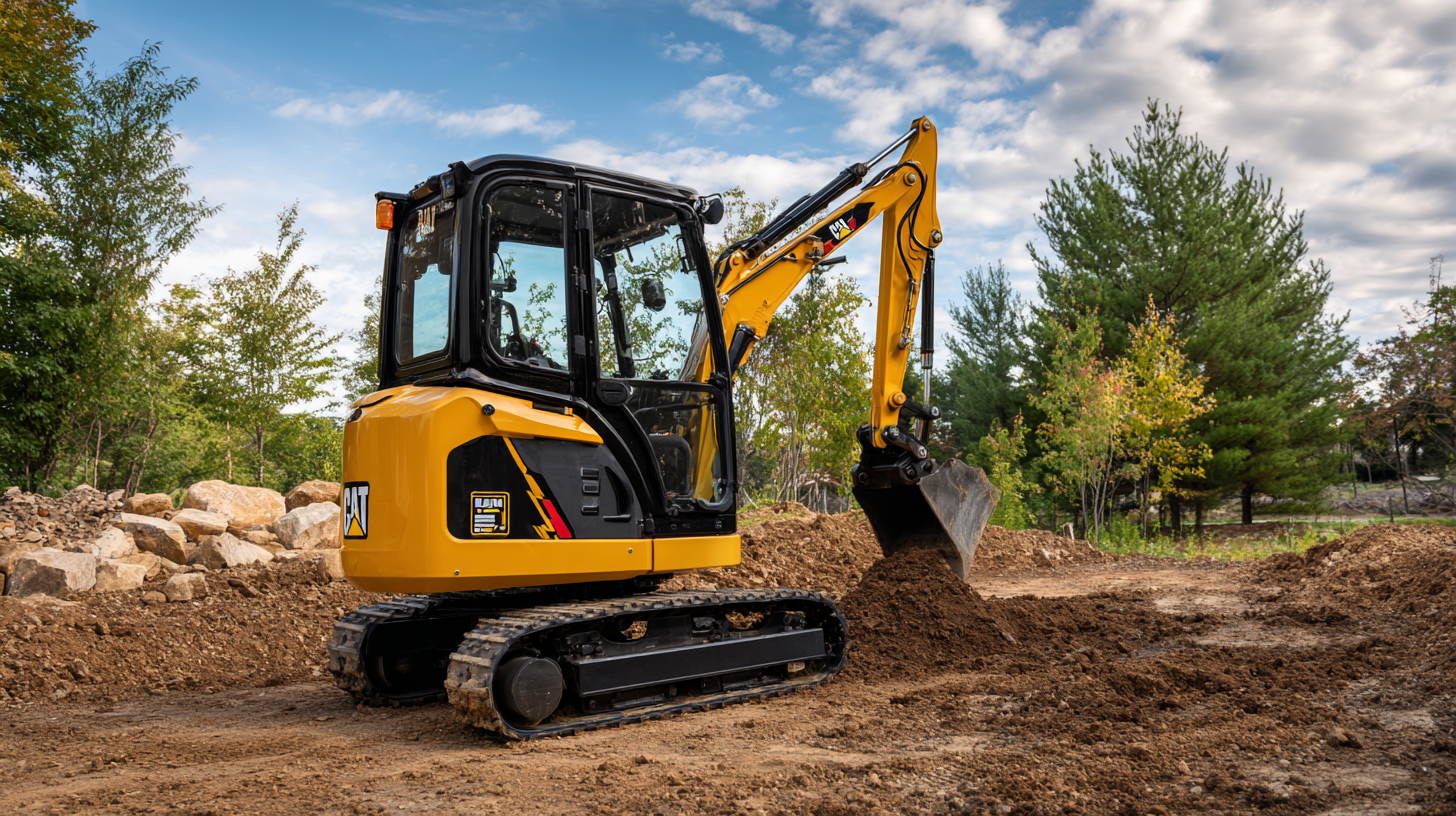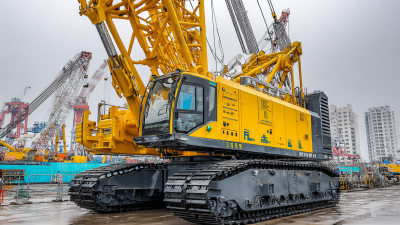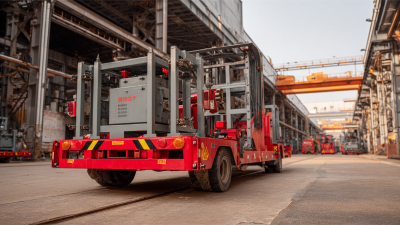Leave Your Message
-
Phone
-
E-mail
-
Whatsapp
The construction industry is increasingly recognizing the value of utilizing Mini Excavators for various projects, driven by their compact size and versatility. According to recent industry reports, the global mini excavator market is projected to grow at a CAGR of 4.5% from 2021 to 2026, reflecting an increasing demand for these machines in both residential and commercial construction. Mini Excavators are particularly favored in urban settings where space is limited, allowing contractors to navigate tight job sites with ease. Additionally, advancements in technology have enhanced their efficiency and productivity, making them indispensable for tasks such as digging, landscaping, and grading. As construction professionals seek to optimize their operations and minimize costs, harnessing the power of Mini Excavators could serve as a strategic advantage that paves the way for successful project outcomes.

 Mini excavators have become increasingly popular in the construction industry due to their versatility and efficiency. Available in various types, these machines cater to a wide range of applications, from landscaping to heavy-duty excavation. According to industry reports, the global mini excavator market is expected to grow at a CAGR of over 6% from 2022 to 2030, highlighting their rising demand. The common types of mini excavators include zero tail swing models, which offer greater maneuverability in tight spaces, and conventional tail swing models, designed for heavy lifting and digging tasks.
Mini excavators have become increasingly popular in the construction industry due to their versatility and efficiency. Available in various types, these machines cater to a wide range of applications, from landscaping to heavy-duty excavation. According to industry reports, the global mini excavator market is expected to grow at a CAGR of over 6% from 2022 to 2030, highlighting their rising demand. The common types of mini excavators include zero tail swing models, which offer greater maneuverability in tight spaces, and conventional tail swing models, designed for heavy lifting and digging tasks.
When choosing a mini excavator, consider the model's weight class and horsepower, as these factors greatly affect performance and suitability for your project. Larger models, for instance, typically overweight the 10,000-pound mark, making them more fit for tough terrains. Additionally, features such as hydraulic attachments can expand the machine’s capability, allowing it to handle tasks like grading or lifting more efficiently.
Tips: Always assess the specific needs of your project before selecting a mini excavator. If working in confined spaces, opt for compact models with zero tail swing. Furthermore, investing in a machine with advanced features like extendable arms or enhanced hydraulics can significantly boost your productivity, making the project run smoother and faster.
Mini excavators are increasingly playing a pivotal role in enhancing the efficiency and productivity of construction projects across India. As projects become more complex and the need for precision increases, the compact size and versatility of mini excavators provide contractors with the ideal solution. According to a recent industry report, the mini excavator market in India is projected to grow at a CAGR of 7.5% over the next few years, driven by rising urbanization and infrastructure development initiatives.
These machines are uniquely designed to maneuver in tight spaces where traditional excavators may struggle, making them invaluable for urban construction sites. They facilitate the quick completion of tasks such as digging, demolition, and grading, leading to significant time savings. A study indicated that projects utilizing mini excavators can see productivity improvements of up to 30%, allowing for faster project timelines without compromising on quality. As the construction landscape evolves, integrating mini excavators into project workflows will be crucial for maximizing efficiency.
| Dimension | Description | Impact on Project | Estimated Time Savings (%) | Cost Efficiency ($) |
|---|---|---|---|---|
| Digging | Highly efficient for small to medium excavations | Increases speed and reduces labor | 30% | $200 |
| Trenching | Ideal for narrow trenches for utilities | Improves accuracy and reduces rework | 25% | $150 |
| Backfilling | Efficiently fills holes after digging | Minimizes time spent on manual labor | 20% | $100 |
| Site Clearing | Removes debris and prepares site | Accelerates project start time | 15% | $175 |
When considering the financial implications of construction projects, mini excavators emerge as a significant asset. A cost-benefit analysis shows that while the initial investment in a mini excavator may seem daunting—ranging from $20,000 to $50,000 depending on the model and specifications—the long-term savings on labor and operational efficiency can be substantial. According to a report from the Association of Equipment Manufacturers, projects that integrate mini excavators can reduce labor costs by up to 30% due to their ease of use and efficiency in small spaces.
**Tip:** Evaluate the specific requirements of your project. If tight access points are a concern, a mini excavator's compact size can eliminate the need for extensive site preparation or additional staffing.
Furthermore, maintenance costs for mini excavators tend to be lower than for larger machinery. Many models require simple servicing that can often be handled by the crew on-site, thus minimizing downtime. Industry data from the American Rental Association indicates that renting mini excavators can offer flexibility to project managers who wish to avoid large upfront costs while still gaining the advantage of modern, efficient equipment.
**Tip:** Consider rental options for short-term projects. This approach can provide access to the latest models without the burden of ownership costs, further enhancing your project's budget and efficiency.
This chart illustrates the cost and benefit analysis of investing in mini excavators for construction projects, comparing initial investment, operational costs, and expected benefits over a three-year period.
When using mini excavators on job sites, adherence to safety compliance and best practices is crucial. First and foremost, operators must be adequately trained to handle these machines efficiently. They should understand the specific workings of the excavator, including its capabilities and limitations, to avoid accidents. Additionally, implementing a safety checklist before operating the equipment can significantly reduce risks. Checking for potential hazards, ensuring all safety devices are functional, and confirming that the work area is clear of obstructions are essential steps that should not be overlooked.

Another crucial aspect of safety compliance is the use of personal protective equipment (PPE). Operators and workers in the vicinity of the mini excavator should don hard hats, gloves, steel-toed boots, and high-visibility vests to safeguard against potential injuries. Moreover, maintaining clear communication among team members is vital, especially when the mini excavator is in operation. Hand signals or two-way radios can help maintain awareness of movements and potential dangers, ensuring everyone remains safe on the job site. Following these best practices not only enhances the safety of the crew but also optimizes the efficiency of the construction project.
As the construction industry evolves, mini excavators are becoming increasingly sophisticated, incorporating cutting-edge technologies that enhance their efficiency and versatility. Future innovations in mini excavator design focus on improved automation and remote operation capabilities. By integrating smart sensors and advanced control systems, operators can manage machinery with precision from a distance, minimizing the risk of accidents and maximizing productivity on job sites. These technological advancements not only facilitate ease of use but also ensure that even the most complex tasks can be executed seamlessly.
Another trend shaping the future of mini excavators is the emphasis on sustainability. Manufacturers are developing eco-friendly engines that reduce emissions and promote energy efficiency, in line with global initiatives for greener construction practices. Additionally, advancements in battery technology are paving the way for electric mini excavators that offer quiet operation and decreased environmental impact without sacrificing performance. As these innovations materialize, the mini excavator will not only be a powerful tool in construction but also an integral part of sustainable building efforts, allowing projects to meet modern environmental standards while still delivering on utility and effectiveness.






